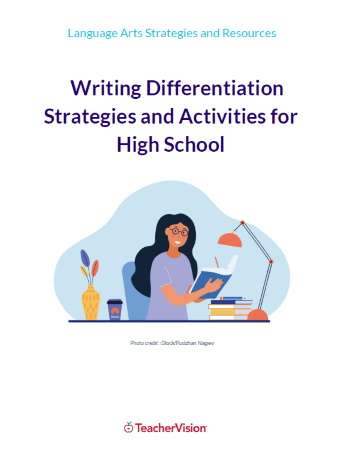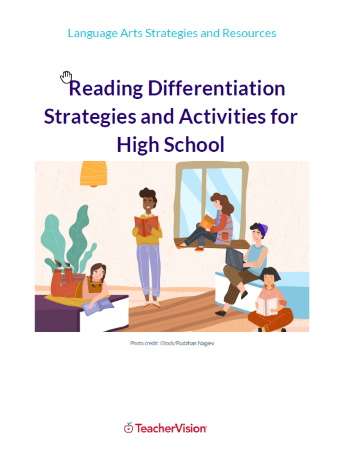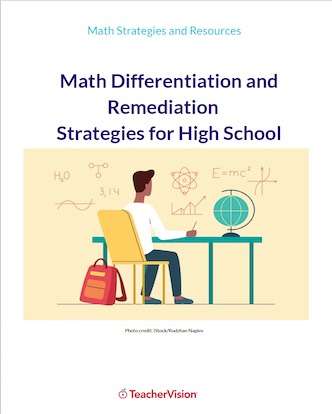Behavior Management: Locus of Control
Jabberwocky
Locus of control refers to the degree to which individuals perceive they are in control of the factors that affect their lives. External individuals feel they are strongly influenced by others (parents, teachers, peers). Internal individuals feel they are primarily responsible for the events that happen to them.
How can we provide the conditions that will stimulate students to be more motivated to learn? Many educators say it comes down to a question of locus of control.
It's important to view the concept of locus of control as a continuum. That is, people aren't 100 percent external or 100 percent internal; they fall somewhere along a continuum line, with a predisposition to one side or the other. Here's what it looks like:
External . . . . . . . . . . . . . . . . . . . . Internal
Interestingly, internal students demonstrate higher levels of academic achievement. External students tend to exhibit lower levels of academic achievement.
It stands to reason that if we can help students achieve a more internal locus of control, we can assist them in achieving higher levels of scholastic achievement. One of the ways teachers do this is through the use of praise and encouragement.
Praise and Encouragement
Expert Opinion
Positive recognition should be done in a casual manner, should require no more than 8 to 10 words, and last no longer than 3 to 5 seconds.
Consider for a moment these two pieces of information. What do they tell you about a classroom atmosphere?
About 90 percent of the positive things students do in a classroom go unrecognized.
On average, only about 2 percent of a teacher's day is devoted to any kind of praise.
It is quite obvious that we often don't take the time to recognize and celebrate the work or efforts of our students. When we don't recognize our students, we deprive them of a powerful motivational incentive for any and all learning tasks.
But praise and encouragement are also at two ends of the locus of control continuum. Praise fosters an external locus of control, and encouragement fosters an internal locus of control. Here's how they're classified:
Praise:
Recognizes the doer. (“You got an A on the test.”)
Is control from the outside. (“You are good when you follow all the class rules.”)
Is evaluation by others. (“You pleased me when you picked up all the pencils.”)
Focuses on the finished, well-done task. (“You are worthwhile because you did the job well.”)
Emphasizes personal gains. (“You came in first; therefore, you are good.”)
Encouragement:
Recognizes the effort of the doer. (“You worked really hard to get your grade.”)
Is faith that the individual can control self. (“You are a responsible person.”)
Promotes self-evaluation. (“How do you feel about your work so far?”)
Emphasizes effort and progress of a task. (“Look at all the improvement you have made.”)
Emphasizes appreciation of contributions and assets. (“Your efforts helped us have a good science fair.”)
This is not to say we should eliminate all praise and concentrate solely on encouragement. Rather, we need to emphasize more encouragement than praise to help students achieve a more internal locus of control.
We also need to take time regularly and consistently to recognize our student's effort or work. No one likes to do work without recognition—you don't, I don't, and your students don't.
Praise and Encouragement Considerations
It's Elementary
It's generally acceptable to praise or encourage elementary students in front of other students.
Secondary Thoughts
At the middle school and high school level, praise and encourage individuals privately. Save the public praise for groups.
Praise and encouragement, in large quantities, can be powerful elements in any successful teacher's classroom. But you must remember some major considerations if your verbal comments are to be effective:
You must use the praise or encouragement consistently. It cannot be used every once in a while or randomly. And it cannot be used just for the good students and not the underachieving students. It must be a regular element for every student in every learning activity.
You must be honest with the praise or encouragement. It must acknowledge the learner's true achievement, rather than any fake or made-up accomplishments.
You must be specific with the praise or encouragement. General statements such as “Good,” “Great,” or “Cool” are too general to have any meaning. Provide a very specific reference for a student. (“You must feel very proud about the work you did on your Civil War project.”)
You must give immediate feedback. It has to occur soon after the event or task is completed, or it will be meaningless.







